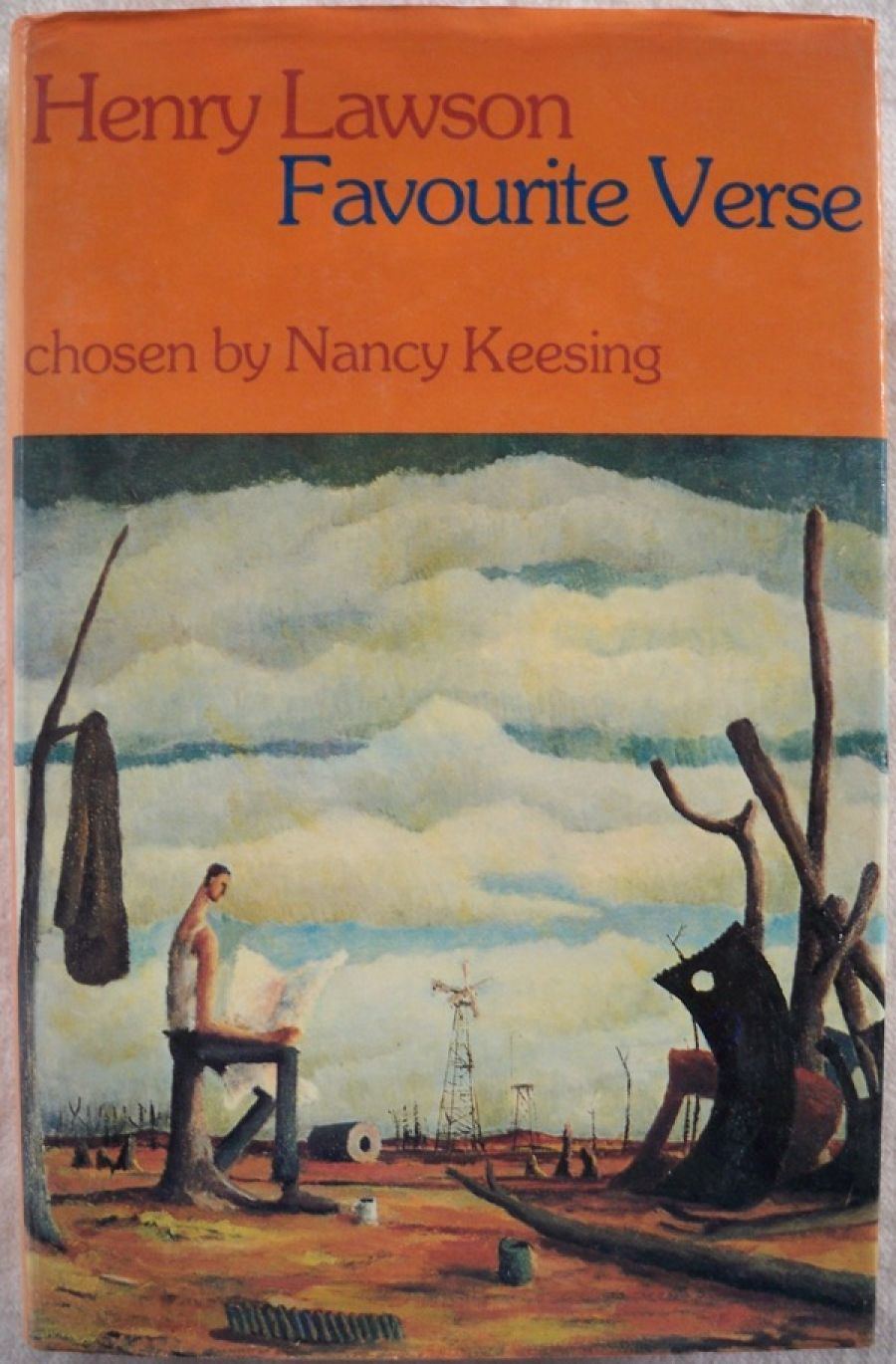
- Free Article: No
- Contents Category: Australian Poetry
- Review Article: Yes
- Article Title: People's Poet
- Online Only: No
- Custom Highlight Text:
I think it was Judith Wright who once remarked that Lawson as a poet wasn’t important; that he seems, usually to have turned to verse as a journalistic medium or as a weapon for propaganda, and that the few of his better poems were such rather because of the intensity of feeling than through any technical or poetic gift.
- Book 1 Title: Henry Lawson
- Book 1 Subtitle: Favourite verse
- Book 1 Biblio: Nelson, 182p., illus.
The admires of Lawson’s verse were not only bush workers and labourers – they included, Miss Keesing reminds us, academics and eminent editors and publishers. But since Australian poetry became more sophisticated – with the emergence of the Brennans, McCraes, Fitzgeralds and Slessors – Lawson’s claims as a poet were largely dismissed by the ‘academics, critics and educated people’ (but not, though Miss Keesing does not mention this, by the bush workers and labourers). She concedes his predictable rhythms, doggerel and mawkishness, but reminds us of changing fashions in the past, considering it not impossible that a future generation may come to admire Lawson’s poetry more than his stories.
It depends, I supposed, on the way they will react to much of what is the sort of frontier verse that Harte, Kipling, Service and Lawson wrote. In this selection (presented, says the editor, ‘warts and all’) there is plenty of the raw stuff of hacking out an existence – ‘The Fire at Ross’s Farm’ ‘The Lights of Cobb & Co’ and the rest of it. There is also outback romance, with the ‘Free Selector’s Daughter’, ‘The Drover’s Sweetheart’ and their ilk. There is the tribute to mateship of ‘The Glass on the Bar’ and ‘Jack Dunn of Nevertire’; the recital of the heartbreak of pioneering life in the ‘Past Cairn’, ‘Andy’s Gone with Cattle’ and ‘There’s a Bunk in the Humpy’ (a poem, incidentally, never before published in a Lawson collection, which Miss Keesing discovered in an early Bulletin).
Now if there were still no television, or radio, or comic books, or cinemas in this country, I daresay many, many people, including the vast majority pf those literate rather than intellectual, would read and enjoy these and others of Lawson’s poems. They would need to be convinced that lines like:
Still I see in my fancy the dark-green and blue
Of the box-covered hills where the five-corners grew,
And the rugged old sheoaks that sighed in the bend
Oe’r the lily-decked pools· where the dark ridges end.
And the scrub-covered spurs running down from the Peak
To the deep grassy banks of Eurunderee Creek,
were not poetry. And someone would have to explain why Tennyson’s lines
I come from haunts of coot and hern,
I make a sudden sally,
And sparkle out among the fern
To bicker down a valley.
were worth a school poetry lesson, and these of Lawson’s
I rise in the drought from the Queensland rain,
I fill my branches again and again.
I drown dry gullies and lave bare hills,
I turn drought-ruts into rippling rills.
were not.
Perhaps there are even in this world of television, radio, etc., who enjoy reading poetry for reasons other than academic speculation and literary criticism; these admirable people may find Miss Keesing’s splendid collection as much to their liking as, say, the latest book of verse by Les Murray or Peter Porter. They may even dare one say it, prefer Lawson’s poetry. And I doubt if the world of literature will come to an end because of that.


Comments powered by CComment